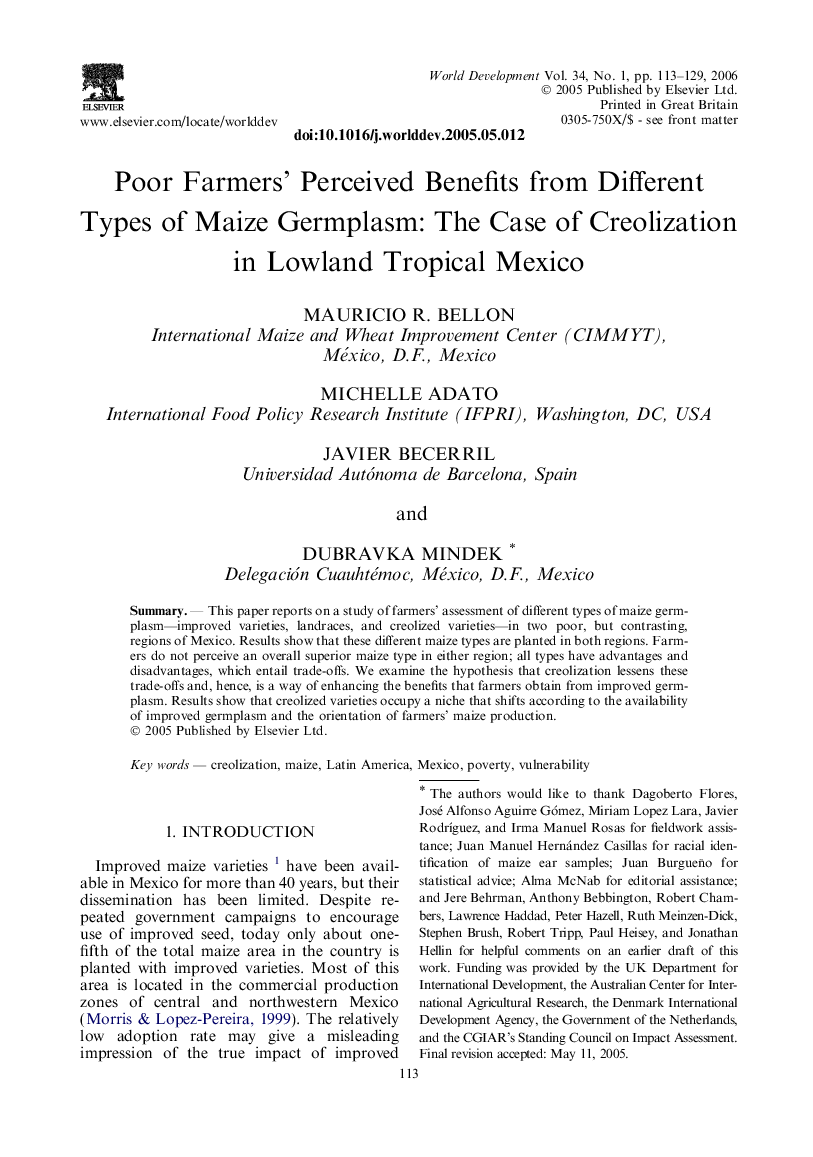| Article ID | Journal | Published Year | Pages | File Type |
|---|---|---|---|---|
| 991848 | World Development | 2006 | 17 Pages |
Abstract
SummaryThis paper reports on a study of farmers’ assessment of different types of maize germplasm—improved varieties, landraces, and creolized varieties—in two poor, but contrasting, regions of Mexico. Results show that these different maize types are planted in both regions. Farmers do not perceive an overall superior maize type in either region; all types have advantages and disadvantages, which entail trade-offs. We examine the hypothesis that creolization lessens these trade-offs and, hence, is a way of enhancing the benefits that farmers obtain from improved germplasm. Results show that creolized varieties occupy a niche that shifts according to the availability of improved germplasm and the orientation of farmers’ maize production.
Related Topics
Social Sciences and Humanities
Economics, Econometrics and Finance
Economics and Econometrics
Authors
Mauricio R. Bellon, Michelle Adato, Javier Becerril, Dubravka Mindek,
